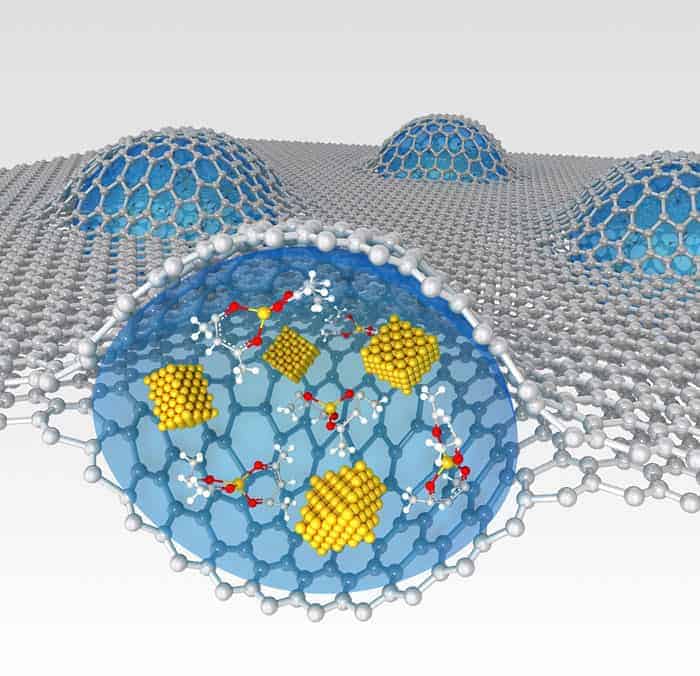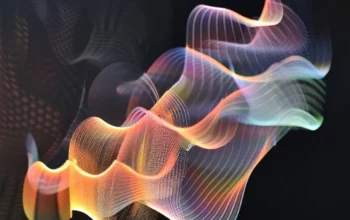The growth of nanocrystals can be likened to the formation of intricate constellations in an undeciphered night sky; each crystal is a star, a singularity coalescing from a medley of stochastic processes happening at the nanoscale. The advent of graphene capsules has illuminated this hidden tapestry, offering unprecedented insights into the intimate dance of atomic entities as they converge to form stable structures. The unique properties of graphene, a monolayer of carbon atoms arranged in a two-dimensional lattice, facilitate the observation of nanocrystal growth dynamics, allowing researchers to visualize phenomena that have eluded scientific inquiry for decades.
At the heart of the scientific fascination surrounding nanocrystal growth lies the principle of nucleation, a process resembling the birth of celestial bodies. In nucleation, clusters of atoms, or embryos, begin to form and transition from a disordered state to an ordered configuration. This phase transition is crucial, as it marks the defining moment when a tiny cluster can begin to grow into a nanocrystal. The environment surrounding these nascent clusters—temperature, pressure, and the presence of surfactants—dictates their eventual fate. Graphene capsules serve as an innovative microreactor, providing a confined space where conditions can be meticulously controlled to observe nucleation with unparalleled clarity.
As scientists unveil the enigmatic mechanics of nanocrystal growth, they simultaneously grapple with the implications of their findings. Nanocrystals hold promise in various applications, ranging from drug delivery systems to advanced semiconductors. The structural properties of these crystals can lead to enhanced functionality in photovoltaics and catalysis, but understanding how to manipulate their growth remains a formidable challenge. The introduction of graphene capsules into this domain not only enhances the ability to observe these processes but also allows for the manipulative control of growth parameters, thus propelling the development of new materials science methodologies.
The allure of graphene capsules lies not only in their functional attributes but also in their ethereal properties. These capsules, akin to cosmic vessels, encapsulate and regulate their nuclei with remarkable precision. Their two-dimensional nature facilitates exceptional electronic and thermal conductivity, enabling them to operate effectively as substrates for the assembly of nanoparticles. Moreover, their mechanical strength provides durability against possible fragmentation during growth, thus preserving the integrity of the underlying crystal structure. The encapsulation process, reminiscent of a chrysalis encasing a pupa, offers a protective barrier that facilitates the growth of nanocrystals while maintaining their purity and uniformity.
Through the lens of graphene capsules, the discovery of growth mechanisms reveals a world governed by quantum mechanics and statistical thermodynamics. The transition from discrete nanoparticles into continuous crystals is not merely a physical change but also an intricate interplay of energies. A delicate balance exists between cohesive forces that draw atoms together and the thermal agitation that may disrupt these nascent structures. Observing this delicate balance within a graphene capsule allows researchers to visualize, in real-time, the process of crystallization as it unfolds, thus bridging the gap between theory and empirical observation.
The ability to monitor changes at such minute scales opens avenues for scientific inquiry into non-equilibrium systems. Non-equilibrium thermodynamics, often likened to a turbulent river resisting damming, poses profound questions about how systems evolve from high-energy states to more stable configurations. The capricious nature of atomistic interactions occurring within the graphene capsule embodies this struggle, reflecting the chaotic beauty of natural processes. Understanding these transformations could provide crucial insights into material design and synthesis strategies that can lead to the development of smarter, more efficient materials.
One of the most exciting prospects offered by these graphene prototypes is their potential to advance the field of catalysis. Nanocrystals, particularly those composed of noble metals, possess significantly enhanced catalytic activity compared to their bulk counterparts due to their high surface area-to-volume ratio. When housed within a graphene capsule, the unique geometrical and electronic properties of the support can modulate reaction kinetics, promoting faster catalytic reactions and selectivity. This synergy between nanocrystal catalysis and graphene encapsulation could lead to breakthroughs in the sustainable production of chemicals and fuels.
Furthermore, the transformational applications of nanocrystals permeate the fields of electronics and photonics. In the quest for smaller, faster, and more efficient electronic devices, the utilization of graphene-coated nanocrystals could revolutionize the way circuits are designed. The integration of these advanced materials can ultimately lead to improved performance in transistors, memory storage devices, and light-emitting diodes (LEDs). By leveraging the insights gained from observing the growth processes in graphene capsules, researchers can fine-tune the properties of nanocrystals to develop electronic components that operate at unprecedented scales.
Ultimately, the exploration of how nanocrystals grow within graphene capsules encapsulates the spirit of modern science—a confluence of interdisciplinary methodologies, cutting-edge materials, and profound curiosity. The complexities unveiled within these experiments serve not only to deepen our understanding of nanotechnology but also to inspire future innovations. In navigating this uncharted territory, scientists are tasked with harnessing the chaotic yet harmonious dance of atoms, converting fleeting glances into long-term vision, and paving the way for a technologically advanced future illuminated by the brilliance of nanocrystals.












